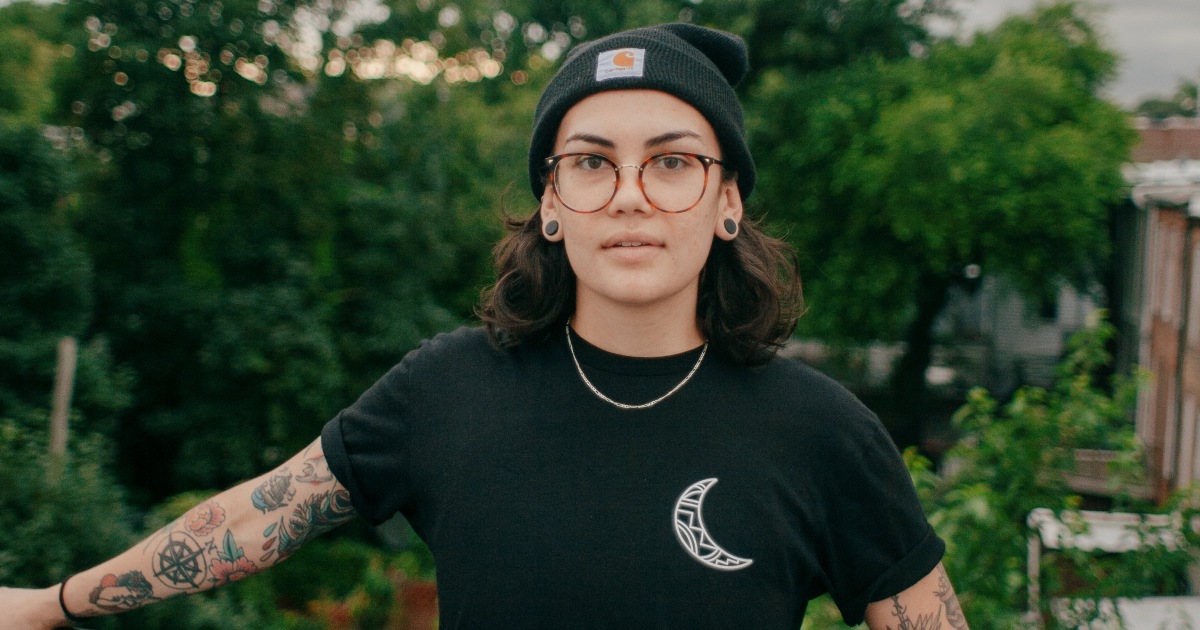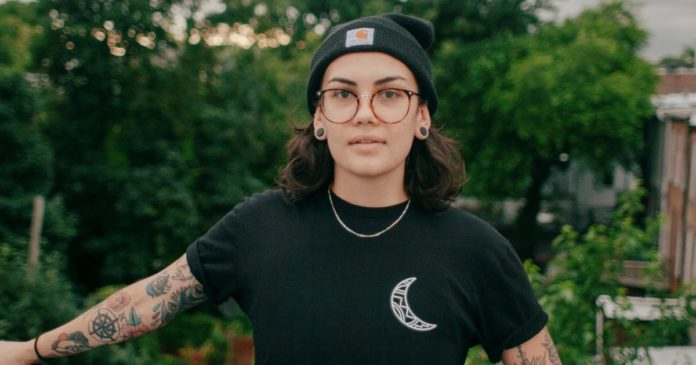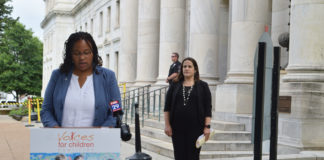
Lesbian, gay, bisexual and transgender American Indian and Alaskan Native (AIAN) adults have higher levels of mental health issues, physical abuse and economic instability than their non-LGBTQ peers, according to a new report.
The study, released last month by the Williams Institute at the UCLA School of Law in advance of Native American Heritage Month in November, found 42 percent of AIAN LGBTQ adults have been diagnosed with depression, compared to less than a quarter of non-LGBTQ Native people and just 6.7 percent of the general U.S. population.
AIAN LGBTQ adults, particularly women, are also more likely to engage in high-risk health behaviors, including heavy drinking, according to the findings.
Three-quarters of respondents reported not having had enough money to make ends meet in the prior year, compared to less than half of non-LGBTQ AIAN people. And nearly half reported a major financial crisis in the prior year, compared to just 11 percent of heterosexual, cisgender Indigenous people.
“The complex picture of health and economic vulnerabilities of AIAN LGBT people is likely a product of factors shared with all Indigenous peoples, such as the impact of historical trauma, and those shared across LGBT people, such as anti-LGBT stigma,” said lead author Bianca D.M. Wilson, a senior scholar of public policy at the Williams Institute and the report’s lead author, told NBC News.
In the report, Wilson stated that, “It is critical that policies and service interventions consider the LGBT status and multiracial identities of AIAN adults.”
‘Pushed out to the fringes’
Somáh Haaland, who is queer and nonbinary and uses gender-neutral pronouns, is the media coordinator for the Pueblo Action Alliance. Haaland also lives with clinical depression.
“The unique intersection of being Native and queer can feel incredibly isolating, both in a displaced urban setting and in our own communities,” they told NBC News.
Haaland said queer Indigenous friends have spoken to them about feeling “like they have to chose one marginalized identity over the other because existing as both simultaneously feels like it is not physically safe or feasible for their mental health.”
“In white queer spaces they experience racism and disconnection, while at home or on their reservation they may feel like being out could exclude them from cultural activities or simply being in community with their people,” said Haaland, whose mother is Secretary of the Interior Deb Haaland.
“Being queer and being Indigenous are both beautiful identities to carry that are sacred when they intersect … But we often must fight twice as hard just to show that we are worthy of living and thriving.”
Somáh Haaland, Pueblo Action Alliance
The Williams Institute study found that violence aimed at LGBTQ American Indians and Native Alaskans was prevalent: More than half of all respondents reported having been physically or sexually assaulted at some point, and 81 percent reported verbal abuse.
Pamela Jumper-Thurman is a retired research scientist in the ethnic studies department at Colorado State University and has researched HIV/AIDS education, substance abuse and mental health in American Indian communities for three decades. Jumper-Thurman said she’s not surprised by the findings.
“In the cities, they may have access to a sense of community, but on the reservations and the rural surrounding areas, they can be ostracized, made fun of and pushed out to the fringes,” she said of LGBTQ American Indians. “They have to be very careful about who they’re out to.”
Tribes are sovereign nations with their own laws and regulations, she added. “If LGBTQ people get assaulted or beaten up in a hate crime on tribal land, it’s often not prosecuted.”
Data on LGBTQ American Indians is extremely limited, but a 2010 survey conducted for the New York State Department of Health found nearly 1 in 3 (29.4 percent) reported experiencing hate violence — the highest rate of any LGBTQ demographic in the report.
State initiatives, like anti-discrimination and hate-crime laws and inclusive education programs, often don’t apply on reservations. Even same-sex marriage is not uniformly recognized.
A 2015 report from the National Congress of American Indians found 54 percent of gay and lesbian AIAN students reported being subject to physical violence because of their sexual orientation, and more than 1 in 3 said they missed class at least once in the last month for fear of being bullied or harassed.
“LGBTQ kids don’t have a place to go,” Jumper-Thurman said. “They don’t have family acceptance, and they may not even have a group of friends they feel comfortable with.”
Haaland shared a similar sentiment.
“Being queer and being Indigenous are both beautiful identities to carry that are sacred when they intersect,” they said. “But we often must fight twice as hard just to show that we are worthy of living and thriving.”
Working toward solutions
Jumper-Thurman recently worked with the Family Acceptance Project at San Francisco State University on a series of posters targeting American Indian families and communities to help support LGBTQ and two-spirit youth. (The phrase “two-spirit” started as an umbrella term in the 1990s for the understanding of gender beyond male and female that many tribes historically embraced before colonization but has come to encompass a diversity of sexual orientations and gender identities.)
The posters show how negative reactions to a child’s sexual orientation, gender identity or gender expression can have a detrimental impact on their well being.
“You’re part of a group already dealing with racism and historical trauma and, within that group — if you’re queer — you can be alienated from your community and even your family,” said Sharon Day, a member of the Ojibwe nation and executive director of the Indigenous Peoples Task Force in Minneapolis. “For people living on reservations, these are small, rural communities that are slower to change.”
Day was one of two children to come out in her family. In 1987, she helped organize the Basket and the Bow, the first national gathering of gay and lesbian American Indians, held at the Minneapolis American Indian Center. (The annual event was later renamed the International Two-Spirit Gathering.)
Today, the Indigenous Peoples Task Force offers a variety of programs but works extensively in HIV education and testing, harm reduction and suicide prevention among Native youth.
Suicide is the second-leading cause of death for Native youths ages 10 to 24, according to the National Indian Council on Aging. A study last year by The Trevor Project found LGBTQ AIAN young people were two-and-a-half times more likely to report a suicide attempt in the past year than their non-Native peers (33 percent to 14 percent).
Both Day and Jumper-Thurman say acceptance of LGBTQ members varies greatly from tribe to tribe and often depends on religion.
“The communities that have been heavily Christianized are the ones where there’s a lot of inequality and discrimination,” Day said. “In the Ojibwe creation story, men and women came into the world simultaneously. We didn’t come from Adam’s rib. That came with the settlers.”
In the South, especially, Christianity is a big part of Native American life, according to Jumper-Thurman.
“There’s just a lot of religious overtones that have infiltrated and changed the culture so much that being LGBT is seen as a bad thing in their eyes,” she said.
The Williams Institute survey found more than 60 percent of AIAN LGBTQ adults reside in the Western and Southern United States.
“In the South, the Church of Christ and Southern Baptist Church are pretty pervasive,” Jumper-Thurman said. “These are not gay-friendly churches, and they’re the ones that have a lot of sway in those areas. In the area where I lived, there were more churches in town than anything else. They may preach in the native language, but they still preach the dogma of white, homophobic Christianity.”
Day founded the Indigenous Peoples Task Force after her brother, Michael, tested positive for HIV in 1987 and they discovered a near total lack of HIV education and prevention programs aimed at the American Indian community.
“We aim to be a safe space, and LGBT people are integrated into everything we do,” Day said.
‘We’ve always been here’
Using data culled from the Gallup Daily Tracking Survey from 2012 to 2017, the Williams Institute estimates that 285,000 AIAN adults identify as LGBTQ. That’s roughly 6 percent of the total Native population — and slightly higher than the 5.6 percent of the general population that identifies as LGBTQ, according to a Gallup poll in February.
AIAN people who identify as part of the LGBTQ community tend to be younger, according the report, with 33 percent between the ages of 18 and 24, compared to just 15 percent of non-LGBTQ AIAN people in that age group.
“Social media has given the youth greater acceptance and more power to express who they are,” Day said. “Because they can belong to a community online, where they may not be able to in the real world. They can reach out to other people.”
For many years, identifying as gay meant leaving the reservation, Day said, for much the same reasons white people who came out left small towns — isolation, alienation and discrimination.
“In the last couple of decades, there are more queer [Native] people who are staying in their home communities,” she said. “Some of that has to do with changing attitudes. I think more and more we see people returning to the cultural values system of our past, and those values are to be kind and loving, to be courageous and honest, to be respectful, to seek wisdom and to be generous.”
“When we’re following that original system,” Day added, “it’s really difficult to not be accepting of other people.”
LGBTQ Natives, she said, “are starting to look at our history and say, ‘We’ve always been here. We’re part of the circle.’”
Haaland called the gender binary “a colonial construct based on European values.”
“Pre-contact, the Native people that we now label as queer and trans were often revered and had sacred roles in their communities,” they said. “It was not until colonialism that the European perspective of gender and sexuality was forced upon our people as a part of the bigger effort to control us and assimilate us into whiteness.”
Day said she tries to remind other American Indian and Alaskan Native people that “these are the values that have been with us since the beginning of time.”
“These are the original instructions,” she said, “and if we follow them it’s really hard to hate anybody.”








